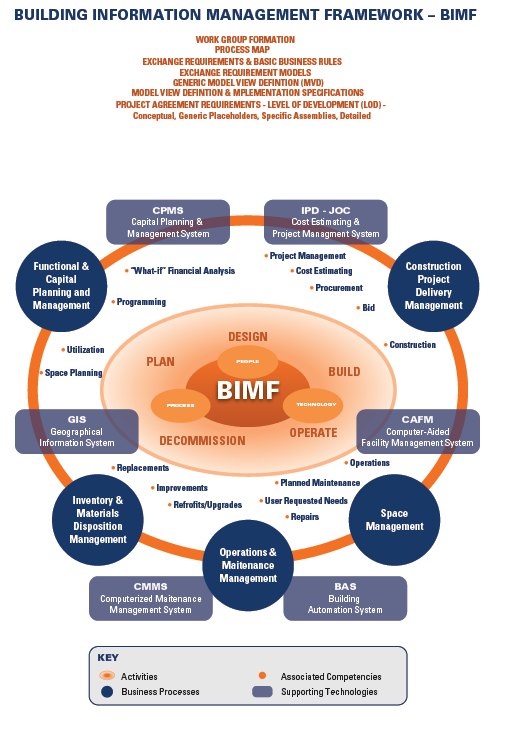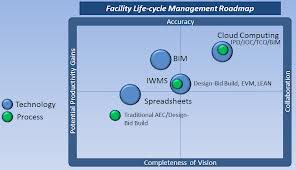BIM is the life-cycle management of the built environment supported by digital technology…. EAM and IWMS are “buzzwords”.
To achieve efficient the life-cycle management involved a list of competencies, processes, technolgies… please add to the list!
- Collaborative construction delivery methods
- Transparency
- Common glossary of terms
- Common information exchange formats
- Management “buy in”
- A focus upon “life-cycle costs” and/or “total cost of ownership” vs. “first costs”
- Metrics, Benchmarks, standardized and detail cost information – “you can’t manage what you don’t measure”.
- …
Achievement of efficient life-cycle management of the built environment requires a fundamental shift in how the AECOO (Architecture, Engineering, Construction, Operations, Owner) sector conduct business. BIM and Cloud Computing are disruptive technologies that will assist in this “transformation”…which as already begun.. while economic and environmental market drivers will assure the transformation.
Adoption of collaborative construction delivery methods such as Integrated Project Delivery (IPD), and Job Order Contracting (JOC) … both decades old… has accelerated, and also are important 

change agents.
Via: www.4Clicks.com – Premier cost estimating and efficient project delivery solutions for JOC, SABER, IDIQ, SATOC, MATOC, MACC ….


